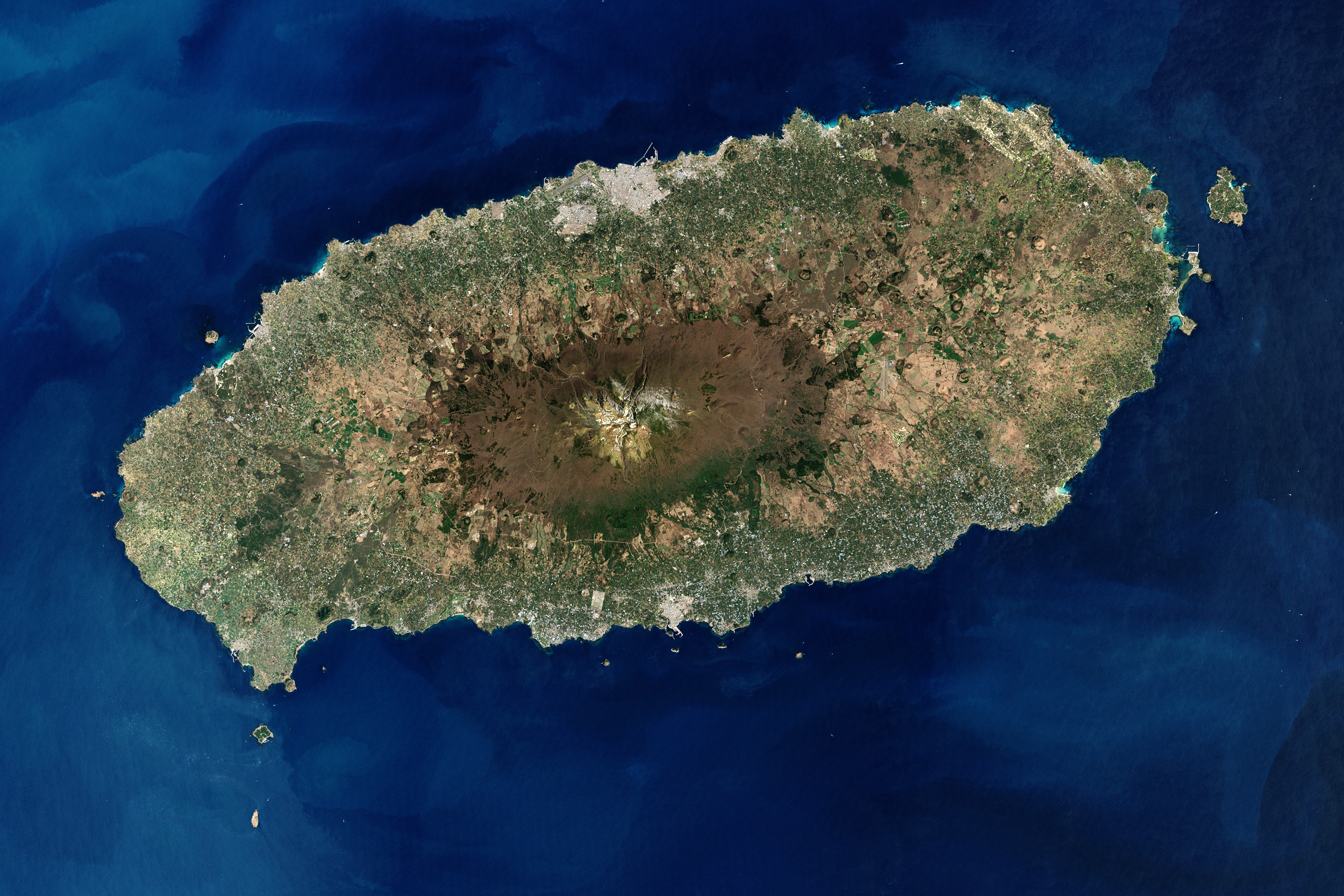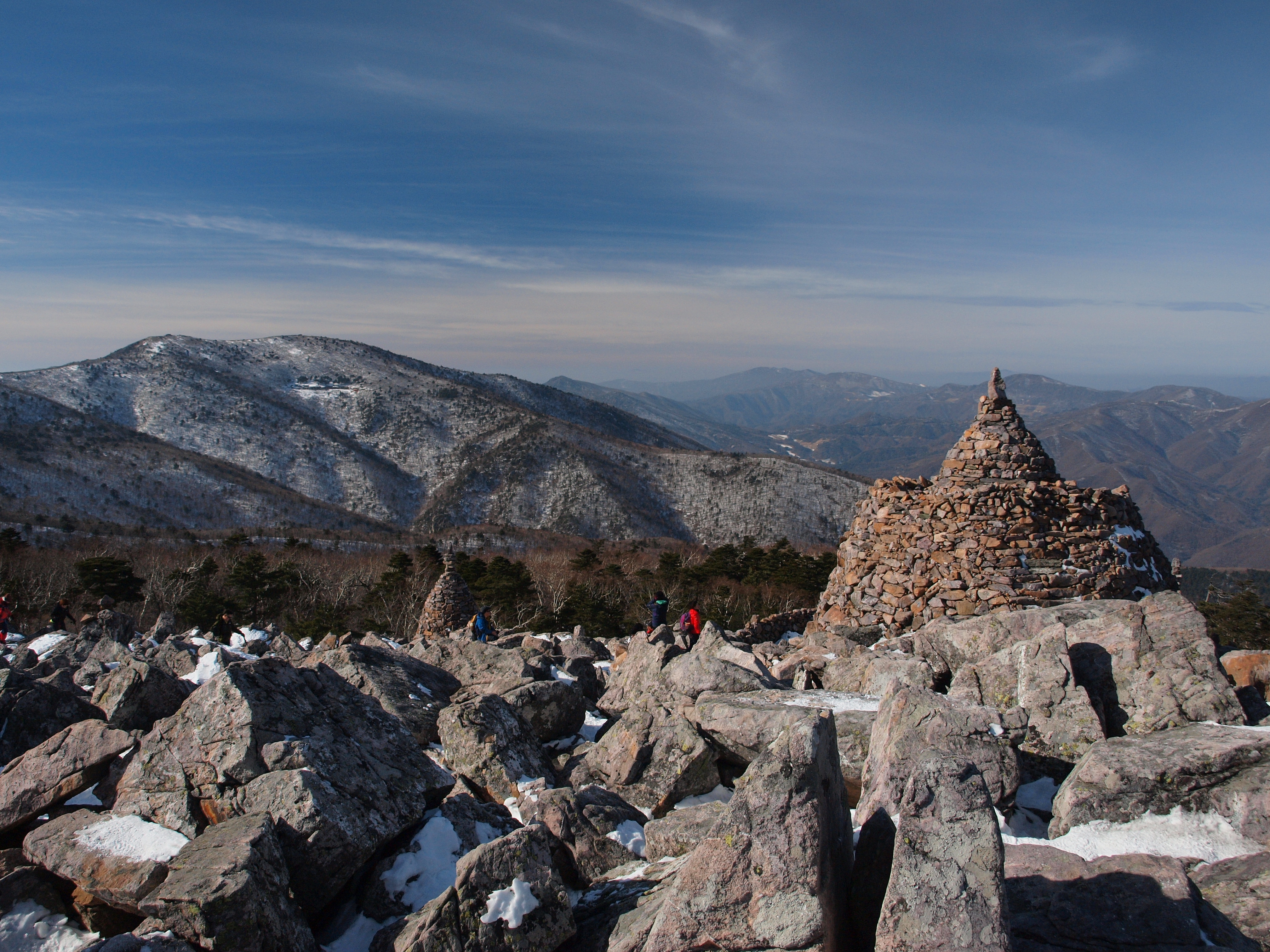|
Hallasan National Park
Hallasan National Park ( ko, 한라산국립공원, 漢拏山國立公園) is located in the province of Jeju-do, South Korea. It was designated as the 9th national park in 1970. It features the highest mountain in South Korea, the shield volcano Hallasan on Jeju Island. It was designated a UNESCO Biosphere Reserve in 2002, and a World Heritage Site in 2007. Hallasan National Park is managed by Jeju Special Self-Governing Province. It is the only out of 22 national parks that is not managed by the Korea National Park Service. Trails Hallasan has 7 trails: Eorimok Trail (6.8 km), Yeongsil Trail (5.8 km), Seongpanak Trail (9.6 km), Seokgulam Trail (1.5 km), Gwaneumsa Trail (8.7 km), Donnaeko Trail (7 km), and Eoseungsaengak Trail (1.3 km). The longest trail is Seongpanak Trail which takes about 4.5 hours. * Eorimok Trail() (6.8 km): Eorimok Trail Starts from Hallasan National Park’s Visitors center (altitude 970 m) and finishes at the ... [...More Info...] [...Related Items...] OR: [Wikipedia] [Google] [Baidu] |
Hallasan
Hallasan is a shield volcano on Jeju Island in South Korea; it is the highest point of South Korea and the second-highest mountain in Korea overall, after Paektu Mountain. The area around the mountain is a designated national park, the Hallasan National Park (, ). Hallasan is commonly considered to be one of the three main mountains of South Korea, along with Jirisan and Seoraksan. Names Hallasan is the highest mountain in South Korea and is worshipped by people as they believe that gods and spirits live on the mountain. Alternate English names for the mountain include Hanla Mountain or Mount Halla and older English sources refer to the peak as Mount Auckland. Hallasan is written in Hangul as if it were ''Hanrasan'' (); however, it is still pronounced as ''Hallasan''. In the past, Hallasan has been known by numerous other names in Korean including ''Buak'' (/), ''Wonsan'' (/), ''Jinsan'' (/), ''Seonsan'' (/), ''Dumuak'' (/), ''Burasan'' (/), ''Yeongjusan'' (/), and ''Hyeolm ... [...More Info...] [...Related Items...] OR: [Wikipedia] [Google] [Baidu] |
South Korea
South Korea, officially the Republic of Korea (ROK), is a country in East Asia, constituting the southern part of the Korea, Korean Peninsula and sharing a Korean Demilitarized Zone, land border with North Korea. Its western border is formed by the Yellow Sea, while its eastern border is defined by the Sea of Japan. South Korea claims to be the sole legitimate government of the entire peninsula and List of islands of South Korea, adjacent islands. It has a Demographics of South Korea, population of 51.75 million, of which roughly half live in the Seoul Capital Area, the List of metropolitan areas by population, fourth most populous metropolitan area in the world. Other major cities include Incheon, Busan, and Daegu. The Korean Peninsula was inhabited as early as the Lower Paleolithic period. Its Gojoseon, first kingdom was noted in Chinese records in the early 7th century BCE. Following the unification of the Three Kingdoms of Korea into Unified Silla, Silla and Balhae in the ... [...More Info...] [...Related Items...] OR: [Wikipedia] [Google] [Baidu] |
Shield Volcano
A shield volcano is a type of volcano named for its low profile, resembling a warrior's shield lying on the ground. It is formed by the eruption of highly fluid (low viscosity) lava, which travels farther and forms thinner flows than the more viscous lava erupted from a stratovolcano. Repeated eruptions result in the steady accumulation of broad sheets of lava, building up the shield volcano's distinctive form. Shield volcanoes are found wherever fluid low-silica lava reaches the surface of a rocky planet. However, they are most characteristic of ocean island volcanism associated with hot spots or with continental rift volcanism. They include the largest volcanoes on earth, such as Tamu Massif and Mauna Loa. Giant shield volcanoes are found on other planets of the Solar System, including Olympus Mons on Mars and Sapas Mons on Venus. Etymology The term 'shield volcano' is taken from the German term ''Schildvulkan'', coined by the Austrian geologist Eduard Suess in 1888 an ... [...More Info...] [...Related Items...] OR: [Wikipedia] [Google] [Baidu] |
World Network Of Biosphere Reserves
The UNESCO World Network of Biosphere Reserves (WNBR) covers internationally designated protected areas, known as biosphere reserves, which are meant to demonstrate a balanced relationship between people and nature (e.g. encourage sustainable development). They are created under the Man and the Biosphere Programme (MAB). Mission The World Network of Biosphere Reserves (WNBR) of the MAB Programme consists of a dynamic and interactive network of sites. It works to foster the harmonious integration of people and nature for sustainable development through participatory dialogue, knowledge sharing, poverty reduction, human well-being improvements, respect for cultural values and by improving society's ability to cope with climate change In common usage, climate change describes global warming—the ongoing increase in global average temperature—and its effects on Earth's climate system. Climate change in a broader sense also includes previous long-term changes to E .. ... [...More Info...] [...Related Items...] OR: [Wikipedia] [Google] [Baidu] |
UNESCO
The United Nations Educational, Scientific and Cultural Organization is a specialized agency of the United Nations (UN) aimed at promoting world peace and security through international cooperation in education, arts, sciences and culture. It has 193 member states and 12 associate members, as well as partners in the non-governmental, intergovernmental and private sector. Headquartered at the World Heritage Centre in Paris, France, UNESCO has 53 regional field offices and 199 national commissions that facilitate its global mandate. UNESCO was founded in 1945 as the successor to the League of Nations's International Committee on Intellectual Cooperation.English summary). Its constitution establishes the agency's goals, governing structure, and operating framework. UNESCO's founding mission, which was shaped by the Second World War, is to advance peace, sustainable development and human rights by facilitating collaboration and dialogue among nations. It pursues this objective t ... [...More Info...] [...Related Items...] OR: [Wikipedia] [Google] [Baidu] |
World Heritage Site
A World Heritage Site is a landmark or area with legal protection by an international convention administered by the United Nations Educational, Scientific and Cultural Organization (UNESCO). World Heritage Sites are designated by UNESCO for having cultural, historical, scientific or other form of significance. The sites are judged to contain " cultural and natural heritage around the world considered to be of outstanding value to humanity". To be selected, a World Heritage Site must be a somehow unique landmark which is geographically and historically identifiable and has special cultural or physical significance. For example, World Heritage Sites might be ancient ruins or historical structures, buildings, cities, deserts, forests, islands, lakes, monuments, mountains, or wilderness areas. A World Heritage Site may signify a remarkable accomplishment of humanity, and serve as evidence of our intellectual history on the planet, or it might be a place of great natural beauty. A ... [...More Info...] [...Related Items...] OR: [Wikipedia] [Google] [Baidu] |
Korea National Park Service
Korea ( ko, 한국, or , ) is a peninsular region in East Asia. Since 1945, it has been divided at or near the 38th parallel, with North Korea (Democratic People's Republic of Korea) comprising its northern half and South Korea (Republic of Korea) comprising its southern half. Korea consists of the Korean Peninsula, Jeju Island, and several minor islands near the peninsula. The peninsula is bordered by China to the northwest and Russia to the northeast. It is separated from Japan to the east by the Korea Strait and the Sea of Japan (East Sea). During the first half of the 1st millennium, Korea was divided between three states, Goguryeo, Baekje, and Silla, together known as the Three Kingdoms of Korea. In the second half of the 1st millennium, Silla defeated and conquered Baekje and Goguryeo, leading to the "Unified Silla" period. Meanwhile, Balhae formed in the north, superseding former Goguryeo. Unified Silla eventually collapsed into three separate states due to civil war ... [...More Info...] [...Related Items...] OR: [Wikipedia] [Google] [Baidu] |
Biosphere Reserve
A nature reserve (also known as a wildlife refuge, wildlife sanctuary, biosphere reserve or bioreserve, natural or nature preserve, or nature conservation area) is a protected area of importance for flora, fauna, or features of geological or other special interest, which is reserved and managed for purposes of conservation and to provide special opportunities for study or research. They may be designated by government institutions in some countries, or by private landowners, such as charities and research institutions. Nature reserves fall into different IUCN categories depending on the level of protection afforded by local laws. Normally it is more strictly protected than a nature park. Various jurisdictions may use other terminology, such as ecological protection area or private protected area in legislation and in official titles of the reserves. History Cultural practices that roughly equate to the establishment and maintenance of reserved areas for animals date back t ... [...More Info...] [...Related Items...] OR: [Wikipedia] [Google] [Baidu] |
National Parks Of South Korea
The national parks of South Korea are preserved parcels of public land on which most forms of development are prohibited. They cover a total of 6.6% of the country's area, and are typically located in mountainous or coastal regions. The country's largest mountain park is Jirisan National Park in the southwest; this was also the first national park to be designated in 1967. The largest marine park is Dadohaehaesang, with an area of more than , but almost all of this is water. The smallest park is Wolchulsan, with an area of only . As of 2016, there are 22 national parks in South Korea; the parks, with the exception of Hallasan National Park, are managed by the Korea National Park Service, established in 1987. The Authority operates its own police force, and since 1998 has been under the jurisdiction of the Ministry of Environment. It was previously under the jurisdiction of the Ministry of Construction. History Early on, admission to national parks in South Korea was free. In ... [...More Info...] [...Related Items...] OR: [Wikipedia] [Google] [Baidu] |
Protected Areas Established In 1970
Protection is any measure taken to guard a thing against damage caused by outside forces. Protection can be provided to physical objects, including organisms, to systems, and to intangible things like civil and political rights. Although the mechanisms for providing protection vary widely, the basic meaning of the term remains the same. This is illustrated by an explanation found in a manual on electrical wiring: Some kind of protection is a characteristic of all life, as living things have evolved at least some protective mechanisms to counter damaging environmental phenomena, such as ultraviolet light. Biological membranes such as bark on trees and skin on animals offer protection from various threats, with skin playing a key role in protecting organisms against pathogens and excessive water loss. Additional structures like scales and hair offer further protection from the elements and from predators, with some animals having features such as spines or camouflage servin ... [...More Info...] [...Related Items...] OR: [Wikipedia] [Google] [Baidu] |




